Contribution of ICT to sustainable
development for the Society and the Planet
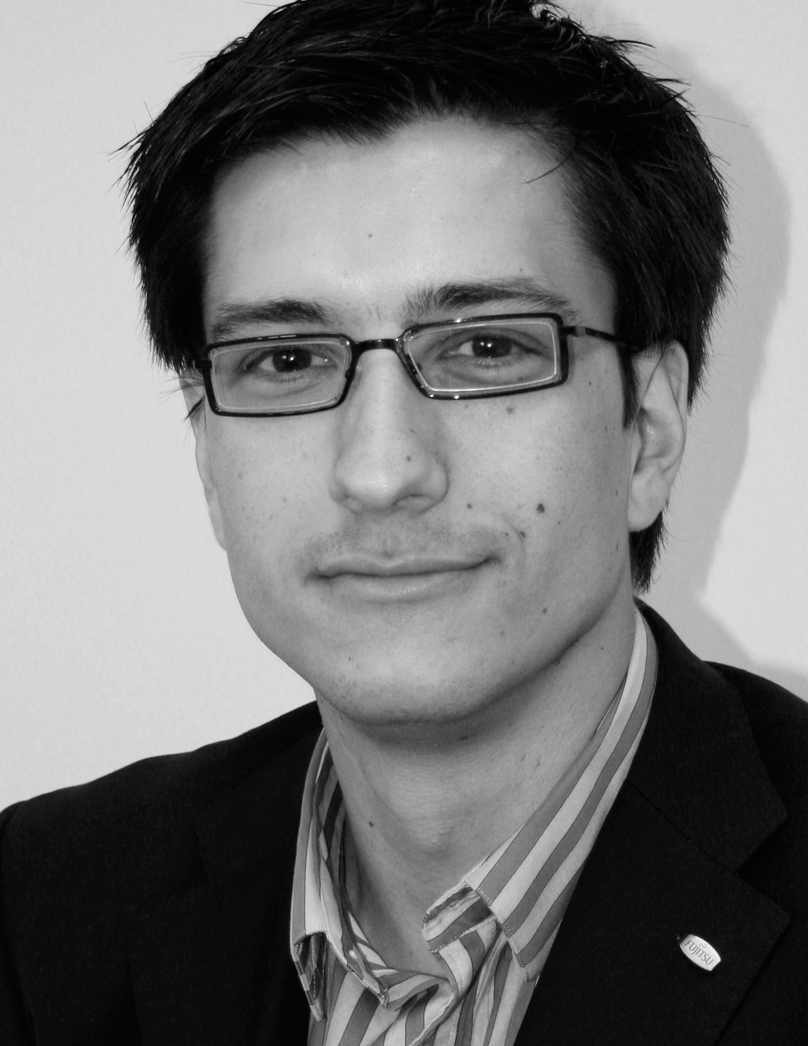
Nuno-Philippe Araujo, Fujitsu, Québec, Canada
Philippe Araujo graduated with an MBA in
IT Management from Laval University and is also Green IT
Certified (ISEB Foundation, BCS). Having worked for Fujitsu
Canada since 2009, he acts as a consultant in Sustainable
Development and Green IT (Green IT), as well as in Business
Analysis and IT Service Management.
Mr. Araujo is mainly
engaged in the development and positioning of Fujitsu's
Sustainable Development offer in both private and public
sectors of Canadian markets. To do so, he acts as a leader in
Sustainable Development for the Fujitsu North America
Community (more than 80 members) and thus represents the North
American division for Fujitsu's International Business
Group.
Experienced speaker and visionary, he is known for
his unique way of using IT in our society by going beyond the
purely technological considerations. He is in fact part of the
new Fujitsu Canada iSociety team whose aim is to make cities
and Canadian businesses smarter and environmentally
responsible.
Abstract
By 2050, 9 billion people will make up world
population and urbanization will exceed 70%. Utilities
such as we know them today will not follow this unbridled
growth without having certain visions or approaches
questioned. The social, economic and environmental issues
are important and many questions still remain unanswered.
To continue providing quality of life and ensuring social
prosperity, we must reinvent the urban model as we know
it. Traditionally, information technology (IT) was limited
to desktop tools. With the addition of communications and
electronic data management, information technology and
communications (ITC) have become part of our daily
lives.
Their use must be revisited and we must
benefit from the generated data. Using ITC will allow us
to re-engineer the road network management as well as
traceability in food or even predict environmental
disasters. We will build a "Human-Centric Intelligent
Society" while contributing to global sustainable
development.
Line Bérubé, Recyc-Québec, Canada
Respectful of her colleagues and the environments in which she has evolved professionally, Line Bérubé Vice-President, Administration & Programs, for the crown corporation RECYC-QUÉBEC, is a highly skilled manager and communicator. Line is a born negotiator with a talent for bringing together important multi-stakeholders, often with very different agendas, involved with policies regarding consumer issues, waste generation, reduction and recycling. Throughout her career, Line has endeavored to raise awareness and to minimize the impact of industry on the environment. Sustainable development principles have always been her priority, be it as Vice-President, Corporate Affairs, Alouette Inc., a leader in the aluminium business in North America (2003 - 2008) or as Associate Director, Public Affairs at Cirque du Soleil (2000 - 2001) as well as Consultant Public Affairs, for various companies since 1990. Line Bérubé holds an Executive MBA from l'Université du Québec à Montréal (UQAM).
Abstract
The extended producer responsibility (EPR). This new management scheme is thus consistent with the polluter pays principle in that it seeks to allocate the costs of pollution to its author in the form of economic instruments such as levies or quotas. The objective sought by EPR is to transfer the burden of management and financing of end of life (EOL) products to its generators, producers and consumers. In such a system, the overall responsibility is therefore shifted away from the traditional entities, that is municipalities, back to the newly targeted stakeholders. This new paradigm requires the enforcement of a new governance approach mainly targeting manufacturing companies and retailers. Applying the EPR approach to the Information technology industry sector therefore requires the embracement of a new vision that collides with customary practices and habits governing traditional business relationships. To circumvent these difficulties, a common framework must be accepted and that is what Quebec has developed.
Myriam Blais, Ministère du Développement économique, de l'Innovation et de l'Exportation, Québec
Myriam Blais has more than 14 years experience in the environmental fields, from which the last 12 years for the Economic Development Ministry of Quebec, where she acts as climate change and environmental coordinator. She leads the work on the cleantech and environmental industry and guides her Ministry's position on climate change actions. She works on topics like the carbon market including Quebec's participation in the Western Climate Initiative, international promotion of Quebec's cleantech expertise and public program designing. Ms. Blais has recently received the Reseau Environnement Michel Jurdan's award for her contribution and her professionalism in enhancing the knowledge and activities on climate change.
Abstract
Greenhouse gas emissions (GHG) and climate change remain a big concern for governments around the world. From the Kyoto Protocol, the United Nation Convention on Climate Change to regional initiatives like cap and trade systems in Australia andNorth America, including private sector actions, efforts to mitigate climate change are seen everywhere. But those efforts are not enough, GHGs are still going up. The sectors that contribute the most to the emissions worldwide are electricity (25%) and transportation (14%). Even though Information communication technologies (ICT) contribute to GHGs (500 Mt) and will be contributing more in 2020 (1400 Mt), the utilisation of ICTs in other sectors can potentially reduce GHG emissions. Given the Smart 2020 report, ICTs can offset five times their emissions (7800 Mt). The province of Quebec is seeing this potential and putting in place measures to accelerate ICTs use. Last year the governement has lauched an initiative called Equation that builds on a public-private partnership to support the development and demonstration of new ICTs that will help reduce GHGs in Quebec.
Reduced Energy Consumption in Clouds using Milicomputers
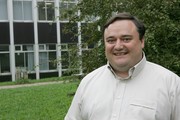
Pascal Bouvry, University of Luxembourg, Luxembourg
Pascal Bouvry Pascal Bouvry earned his
undergraduate degree in Economical & Social Sciences and his
Master degree in Computer Science with distinction ('91) from
the University of Namur, Belgium . He went on to obtain his
Ph.D. degree ('94) in Computer Science with great distinction
at the University of Grenoble (INPG), France. His research at
the IMAG laboratory focussed on Mapping and scheduling task
graphs onto Distributed Memory Parallel Computers. Next, he
performed post-doctoral research on coordination languages and
multi-agent evolutionary computing at CWI in Amsterdam.
Dr Bouvry gained industrial experience as manager of the technology
consultant team for FICS (SONE) a world leader in electronic
financial services. Next, he worked as CEO and CTO of SDC, a
Saigon-based joint venture between SPT (a major telecom operator in
Vietnam), Spacebel SA (a Belgian leader in Space, GIS and
Healthcare), and IOIT, a public research and training center. After
that, Dr Bouvry moved to Montreal as VP Production of Lat45 and
Development Director for MetaSolv Software (ORCL), a world-leader in
Operation Support Systems for the telecom industry (e.g. AT&T,
Worldcom, Bell Canada, etc). Dr. Bouvry is currently heading the
Computer Science and Communications (CSC) research unit of the
Faculty of Sciences, Technology and Communications of Luxembourg
University, and serving as Professor.
Abstract
Millicomputing takes advantage of new generation of hardware for mobile computing such as ARM processors. We will first study the opportunity to either use millicomputers for deploying full cloud computing and HPC solutions. We then define new hybrid solutions that aim at combining the best features of both worlds. This work has been done in the context of Luxembourg National Research fund (FNR) GreenIT project with Frédéric Pinel.
Bruno Bzeznik, University of Grenoble, France
Bruno Bzeznik is a research engineer at the high performance computing center of the University of Grenoble since 2006. He manages a local grid and participates in the developpement of a batch scheduler (OAR) and a grid middleware (CiGri). Before that, he is the creator of the SLIS project, a Linux gateway that provides internet services to schools in France.
Abstract
In the HPC (High Performance Computing) context, especially in grid-computing, resources volatility is a constraint that can be managed. Why not taking into account the outside temperature as a constraint and let a computing cluster run only when the cooling is possible with the outside air and only this? Since one year and a half, we have a HPC host that provides computing resources into our grid at least 85% of the time, and that is powered off when it's too hot outside because we are exclusively using the outside air to cool the cpus. Most of the time, the break happens during the day, but the computing can go on by night. The efficiency of the cooling is unbeatable, because we do not use chillers, but only a fan.
Power-saving strategies for optical grids/clouds
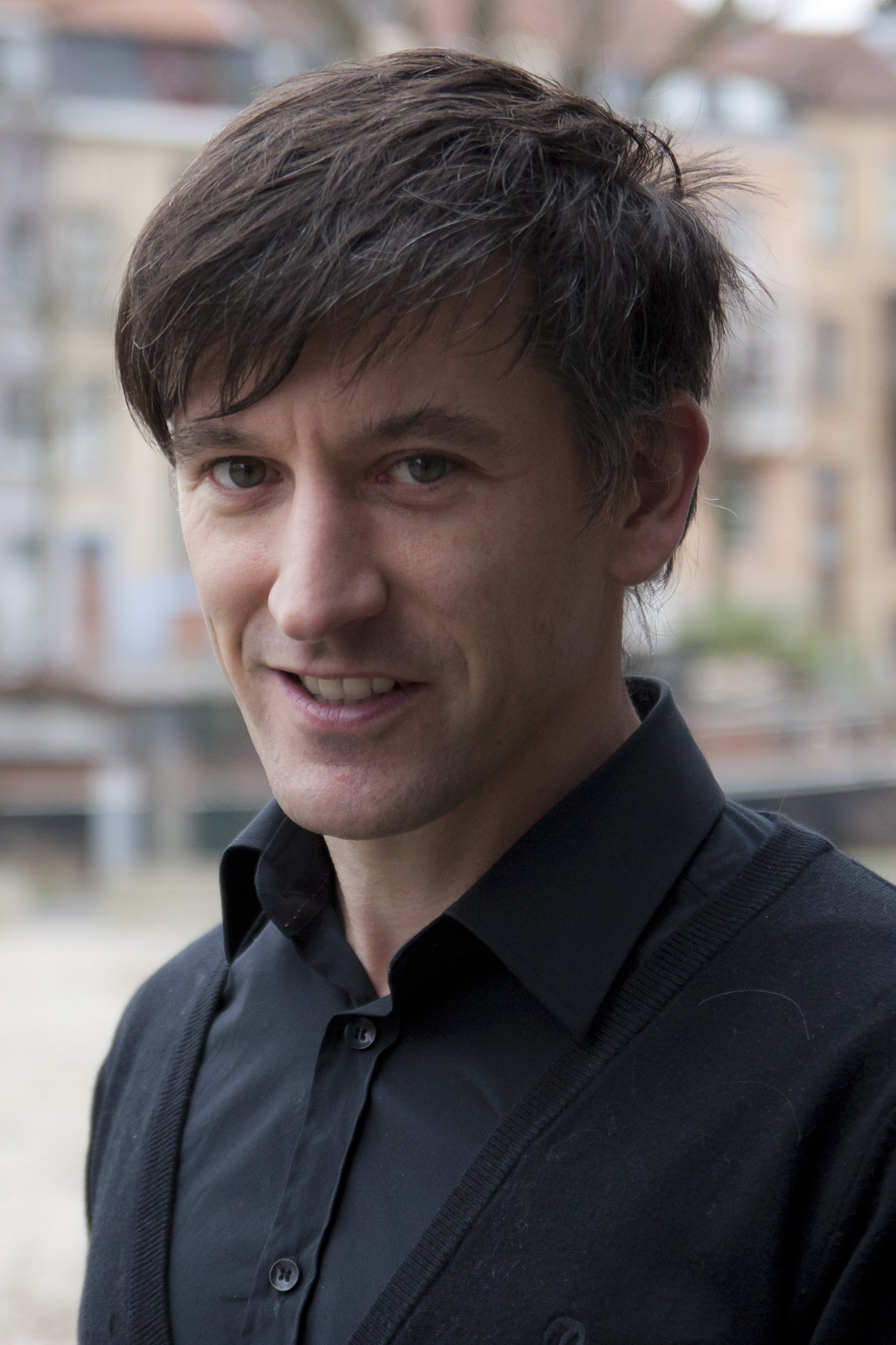
Chris Develder, Ghent University - IBBT, Ghent, Belgium
Chris Develder received the M.Sc. degree in computer science engineering and a Ph.D. in electrical engineering from Ghent University (Ghent, Belgium), in July 1999 and December 2003 respectively. From Oct. 1999 to Dec. 2003, he has been working in the Dept. of Information Technology (INTEC), at the same university, as a Researcher for the Research Foundation - Flanders (FWO), in the field of network design and planning. From Jan. 2004 to Aug. 2005, he worked for OPNET Technologies, on optical network design and planning. In Sep. 2005, he re-joined INTEC as a post-doctoral researcher, and as a post-doctoral fellow of the FWO since Oct. 2006. In Oct. 2007 he obtained a part-time, and since Feb. 2010 a fulltime associate professorship at Ghent University. He was and is involved in national and European research projects (IST David, IST Phosphorus, IST E-Photon One, BONE, IST Alpha, IST Geysers, etc.). His research interests include dimensioning, modeling and optimizing optical (Grid) networks and their control and management, smart grids, as well as multimedia and home network software and technologies. He regularly serves as reviewer/TPC member for international journals and conferences (IEEE/OSA JLT, IEEE/OSA JOCN, IEEE/ACM Trans. Networking, Computer Networks, IEEE Network, IEEE JSAC; IEEE ICC, IEEE SmartGridComm, ECOC, etc.)
Abstract
The evolution towards grid and cloud computing illustrates the crucial role played by (optical) networks in supporting today's applications. They pose novel challenges, calling for efficient interworking of IT resources (for processing and storage) as well as the network that interconnects them and provides access to their users. In this talk, we will discuss the opportunities to minimize energy usage in such (optical) grid/cloud scenarios, which mainly stem from the underlying anycast routing principle, and virtualization. We will present appropriate models for both IT and optical network power consumption, as well as joint routing and scheduling algorithms to both allocate both the IT resources andthe network connections towards them, aiming to minimize overall energy consumption. Illustrative case studies will be discussed.
Considering energy efficiency in public procurement of datacenter equipment
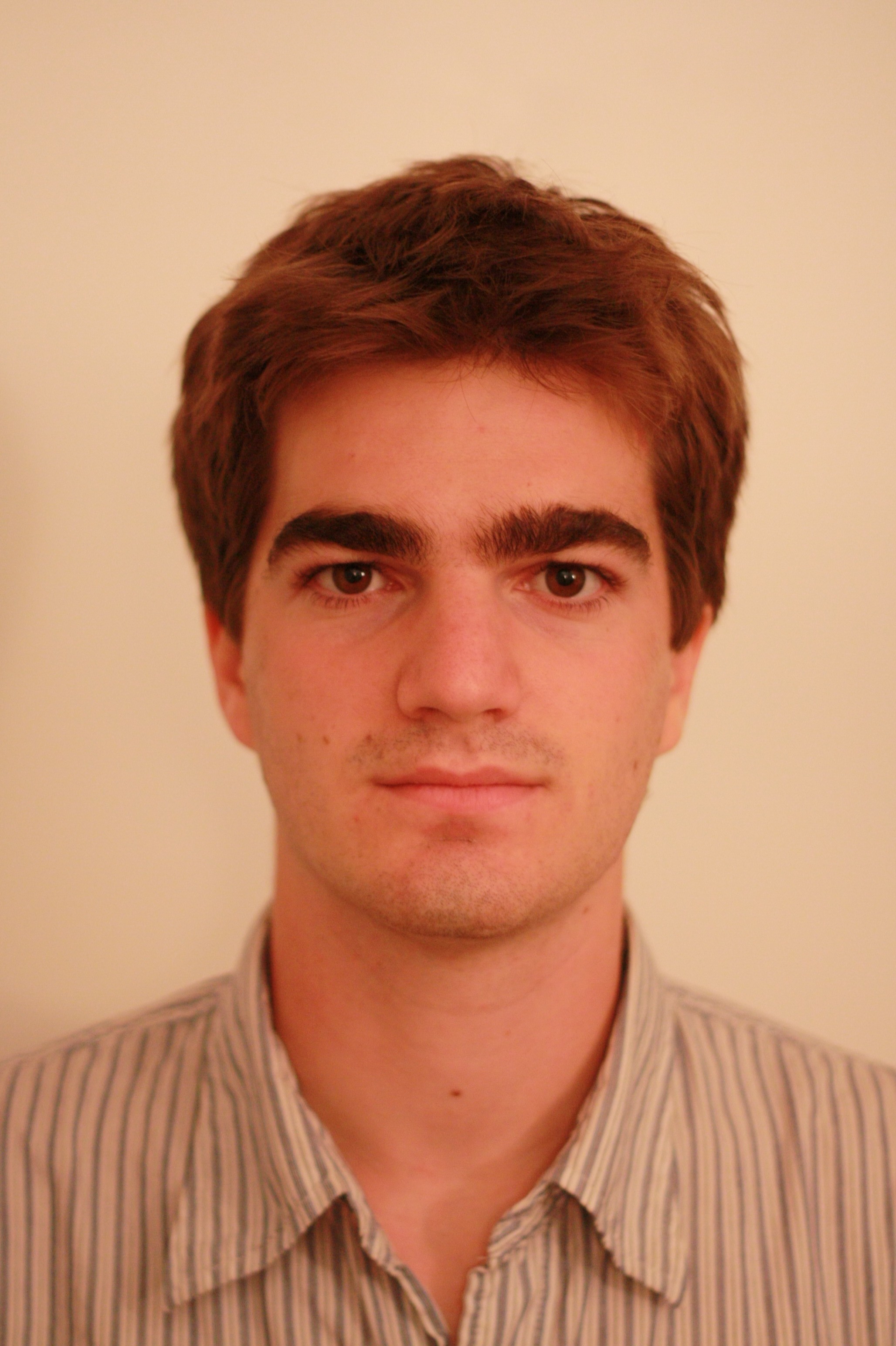
Thibault Faninger, BIO Intelligence Service, Paris, France
Thibault Faninger Thibault Faninger, consultant at BIO Intelligence Service, graduated from École Polytechnique, and also holds a Master's degree in Environmental Engineering from Imperial College London, UK. His skills include Life Cycle Assessment (LCA), I/O analysis applied to environmental field, waste management and water and wastewater treatment. Within BIO Intelligence Service, he works on energy efficiency of energy-using products (in particular, preparatory studies in the context of the Ecodesign Directive 2009/125/EC) and is also involved in projects related to the GHG and energy reporting of the ICT sector.
Abstract
In the context of the PrimeEnergyIT project supported by Intelligent Energy Europe (European Commission program), procurement guidelines were developed (currently at a draft final stage). They aim at supporting public procurers in the inclusion of energy efficiency criteria in their public tenders. The equipment considered in the guidelines are: servers, data storage devices and elements, network equipment, cooling equipment and monitoring equipment. The talk will present the content of this document, which gives advice on how to prepare the procurement approach and suggests relevant energy efficiency criteria by type of equipment. If available, feedback on their workability and applicability will also be provided, based on experience from public procurers having volunteered to implement them in one of their tenders.
DataCenter Life cycle analysis guide lines
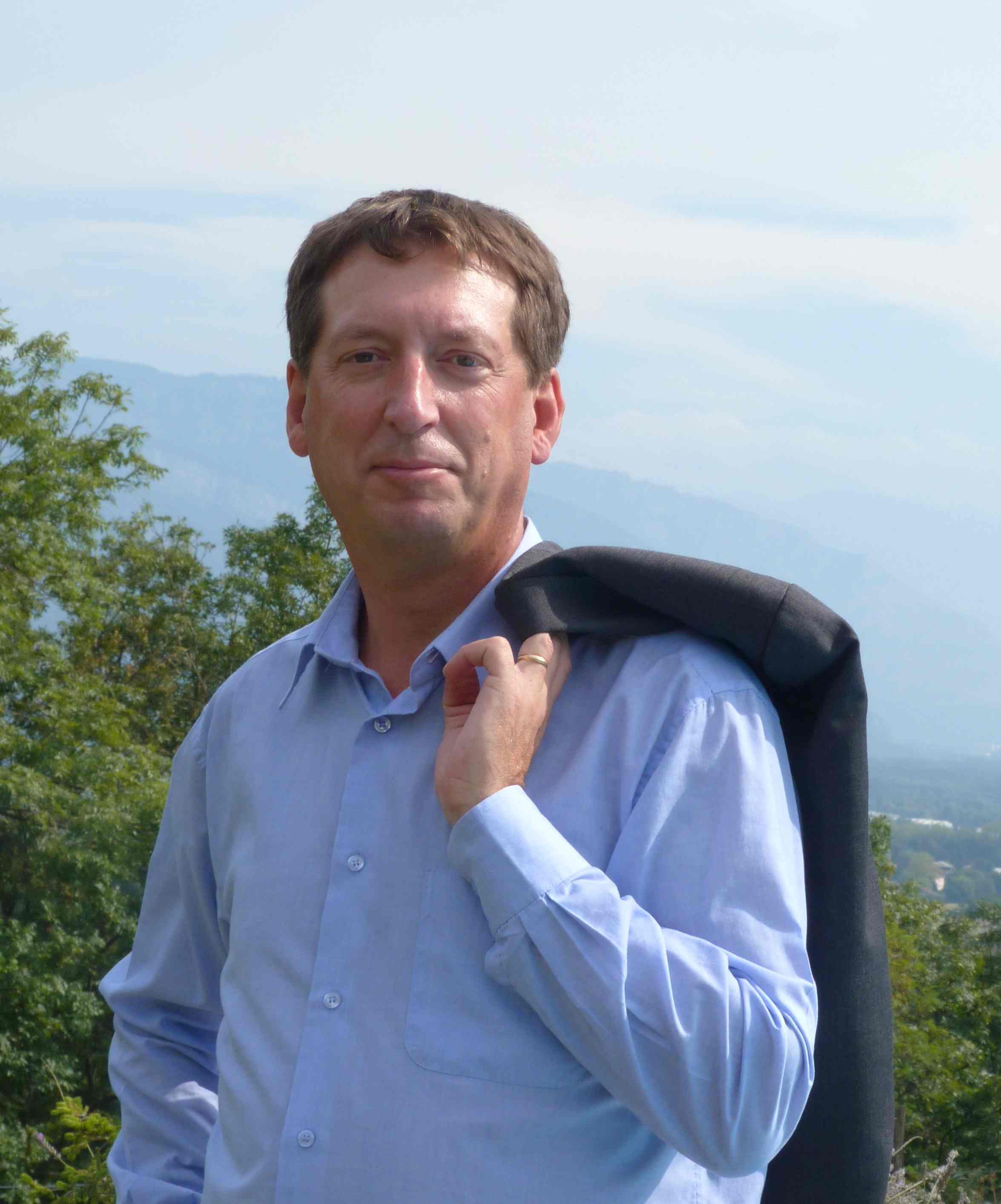
Christophe Garnier, Schneider-Electric, Saint Ismier, France
Christophe Garnier Christophe Garnier has a Master in Computer Sciences, in Grenoble, France. After 10 years in SMEs in the IT sector, he joined Schneider Electric in the marketing team to develop the company web sites. Taking benefit of the fast growing company, he got the opportunity to move to Environmental department and has now more than 10 years of experience in this field. Christophe is an expert in Environmental Life Cycle and Eco-design of products. He implements to a complete range of product in a division of Schneider. His responsibility goes from insuring compliance with international regulations to implementation in RD teams. Christophe is now dedicated to representing Schneider interests in environmental international Standardization bodies and professional consortia. Christophe represents Schneider and the French National Committee in IEC TC111, and is leading a working group for developing Enviromental Standard for the UPS industry in IEC. Christophe is also expert in European CENELEC groups.
Abstract
Increasingly, both the public and private sectors are interested in determining a product or organization’s environmental impact, also referred to as its environmental footprint. Whether for policy making, regulation compliance, or customer information purposes, environmental impact assessments are growing in importance and frequency. A number of entities have developed methodologies and tools for assessing environmental impacts and most can be applied to a data centre. The goal of this presentation is not seek to develop yet another methodology or calculate the environmental impacts of a particular data centre, but rather to provide a framework and rules that can be used by organizations around the world to describe the specifics of their data centres in a consistent manner, so that all the different methodologies can evaluate a data centre’s environmental impacts in the same way. This framework is intended to be used by data centre owners, renters, and operators as a common basis in order to harmonize environmental impact studies. This white paper introduces the framework, highlights supporting industry standards, and discusses how to identify and uniformly describe the key elements of a data centre for the purposes of conducting a comprehensive life cycle assessment (LCA) of a data centre's full environmental impacts.
How to make green future networks
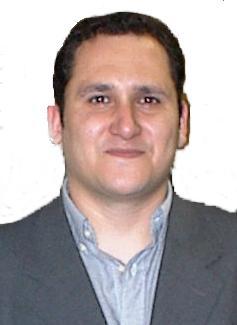
Azeddine Gati, Orange Labs, Issy-les-moulineaux, France
Azeddine Gati Dr Azeddine Gati leads the research program dedicated to energy efficiency of wireless and fixe telecom systems at Orange labs. He is currently involved in Celtic- OperaNET project and vice-chair of the Wireless group of the GreenTouch consortium. Dr. Gati is a member of the Union Radio Scientifique Internationale, France and a senior member of IEEE.
Abstract
Broadband Wireless Network strategy is expected to create an explosive growth of new and existing services, providing the user with a rich broadband experience through true, ubiquitous, real-time and multi-media communications on the move. It is a reality however that new high-bandwidth, high-spectral efficiency modulation schemes being developed to support these broad-band services like 3D media, high definition and broadband everywhere are fundamentally 'RF-unfriendly'. One consequence is the power demanded by future networks is predicted to dramatically increase beyond available and sustainable power envelopes. The presentation will give some of Operators thinking about future networks bring performance and carrying about green aspects.
Ecodesign issues and challenges in the ICT sector
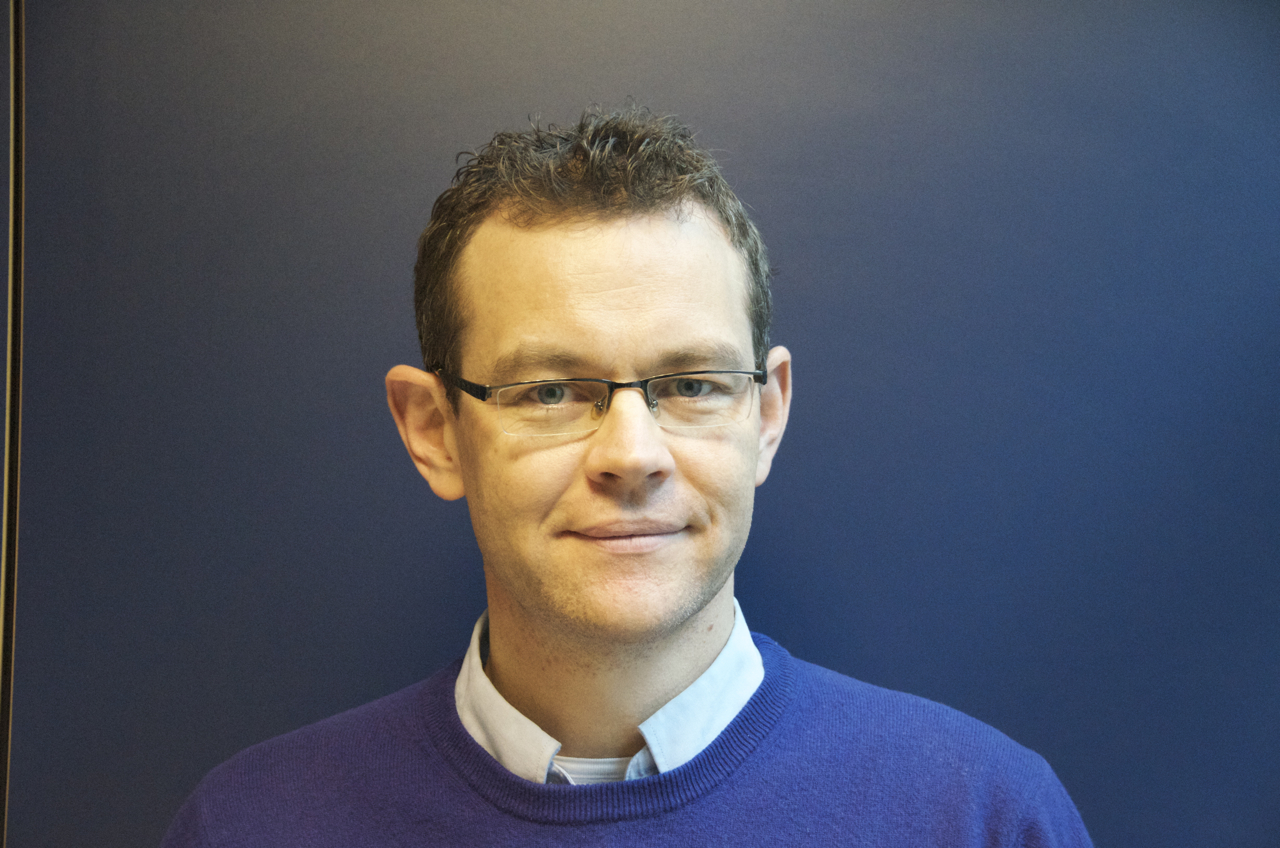
Cédric GOSSART, Institut Mines-Télécom (Télécom Ecole de Management), Evry, France
Cédric Gossart obtained his PhD from the University of Sussex (SPRU-Science and Technology Policy Studies). He is currently an associate professor in the Institut Mines-Telecom (Telecom Business School). He is a member of the research group KIND (Knowledge, Innovation and Network Dynamics), of the group ÉcoInfo, and of the international think tank StEP (Solving the e-waste Problem). He works on the relationships between ICTs and sustainable development, and more specifically on the following research topics: Public policies and digital technologies o Sustainable transitions, Green ICTs, Ecological footprint of ICTs, Waste of Electrical and Electronic Equipments (WEEE) For more information, see http://gossart.wp.mines-telecom.fr.
Abstract
Since the beginning of the thermo-industrial revolution in the 18th century, economic growth has been driven by productivity gains due to massive investments in tangible capital such as machines of manpower. If this material growth-enabled development has been able to take people out of the poverty trap, it has also led to an overuse of the services provided by natural ecosystems (life-support services, absorption of waste, natural resources, amenities). As a consequence, conflicts between human societies and ecological ecosystems have aggravated the three dimensions of ecological impacts: pollution, exhaustion of natural resources, and global ecosystemic changes (climate change, biodiversity losses, ...). Consequently, scientists are claiming that we have entered a new era called the "anthropocene", during which human beings have acquired the power to destroy their global natural ecosystem. This talk will examine the role ICTs can (and cannot) play in taking up these challenges, notably through the diffusion of ecodesign practices.
Green ICT - Why Energy Efficiency is Not Sufficient
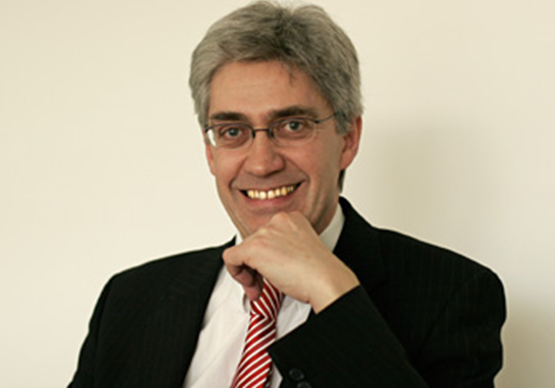
Lorenz M. Hilty, University of Zurich and Empa, Zürich, Switzerland
Dr. Lorenz M. Hilty is professor of Informatics at the University of Zurich and Head of the Informatics and Sustainability Research (ISR) Group, an interdisciplinary team which is shared between the University of Zurich and Empa, the Swiss Federal Laboratories for Materials Science and Technology. His research focus includes the assessment of Information and Communication Technologies (ICT) with regard to sustainability, ICT applications in sustainability research, as well as methodologies of modelling and simulation. He got his Dr. rer. nat. in Computer Science in 1991 from the University of Hamburg, where he later founded the spin-off company "Institut für Umweltinformatik" (Institute for Environmental Informatics) which has been operating successfully until today. After returning to Switzerland, he was leading the innovation and cooperation program "Sustainability in the Information Society" (funded by the ETH board) and building up the "Technology and Society Lab" at Empa. Lorenz Hilty is the author of many articles and monographs in his field and serves as a member of the editorial board of Environmental Modelling and Software.
Abstract
Most part of the "Green IT" or "Green ICT" discussion is addressing issues of energy efficiency of ICT or of technologies influeced by ICT. While this research and development is important as a necessary condition of sustainable development, I will argue in this talk that additional technical, economic and political progress is necessary to reconcile ICT with the idea of sustainable development.
Delay Tolerant and Opportunistic Networking Concepts for Energy-efficient Wireless Networks
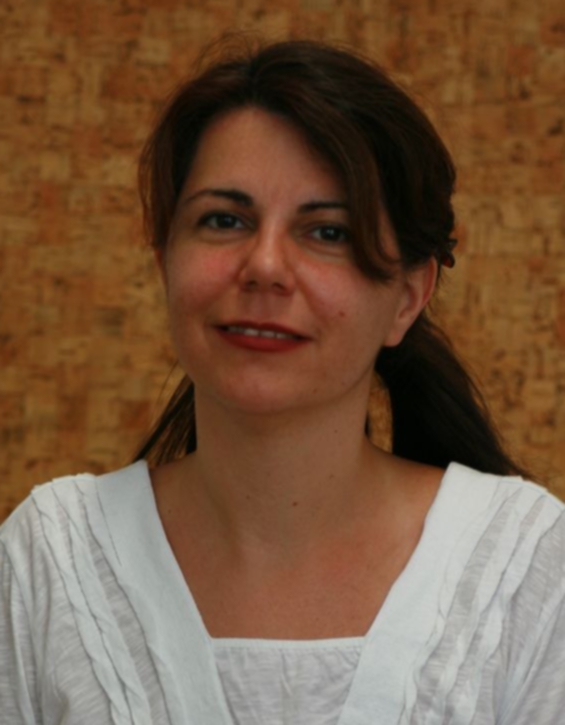
Karin Anna Hummel, University of Vienna, Austria
Karin Anna Hummel Dr. Karin Anna Hummel received her PhD in 2005 from the Vienna University of Technology, Austria. After five years employment in industry as a software engineer, trainer, and IT project manager in computer and communication networks, she joined the University of Vienna, Distributed Systems Group, as a researcher and lecturer and afterwards ETH Zurich, Communication Systems Group, as a Marie Curie fellow and senior researcher in September 2011. K.A. Hummel has expertise in mobile computing, mobility-aware computing, mobility modeling, ad-hoc and opportunistic networking, and energy-efficient wireless networking. She is the co-leader of the focus group on energy-efficient wireless networks in the COST action IC0804. She has (co-)edited/authored three proceeding books, three book chapters, and more than 40 scientific peer-reviewed articles in journals and workshop and conference proceedings.
Abstract
Low energy consumption is a major concern for sustainable and scalable wireless networking. Thus, current development of both end terminals and infrastructure equipment of networks such as 3G/LTE, WiMAX, WLAN, and wireless sensor networks aim at low energy consumption during operation. The energy consumption can be reduced by efficient hardware design, but also by avoiding overprovisioning and inefficient use of the wireless medium. Inefficient use occurs due to, e.g., transmissions while the signal quality is low leading or medium access conflicts which increase the probability of faulty transmissions and, thus, retransmissions. To avoid the inefficient use of the wireless medium, wireless links can be monitored and transmissions without real-time demands can be supported by Delay Tolerant Networking (DTN) and opportunistic networking concepts. The idea is to either switch parts of the network to suspend mode and accept intermittent connectivity or to postpone a transmission until it can be performed more energy-efficiently due to better connectivity opportunities. For example, assume a user trying to upload photos to his or her Facebook or cloud space using a smartphone connected to a WLAN campus network. At locations of low data transfer rates, the smartphone may decide autonomously to postpone the upload until the user has moved to an area of better connectivity - without bothering the user. In this talk, first, the use of DTN and opportunistic communication concepts to increase the energy efficiency of wireless networks will be introduced. In the second part of the talk, the awareness and predictability of user mobility and future energy-efficient connectivity opportunities will be discussed along use cases.
Energy Use in Networks from a Service Perspective

Dan Kilper, Bell Labs, USA
Dan Kilper Dr. Daniel Kilper is a member of technical staff at Bell Labs, Alcatel-Lucent. He received the B.S. degree in electrical engineering and the B.S. degree in physics with honors from Virginia Tech, and the M.S. and Ph. D. degrees in physics from The University of Michigan, Ann Arbor. He was a post-doctoral research scientist at the Montana State University Optical Technology Center and became an assistant professor of physics at the University of North Carolina, Charlotte in 1997 before joining Bell Labs in 2000. Dan is a senior member of IEEE and an associate editor for the OSA/IEEE Journal of Optical Communications and Networking. He serves as the Bell Labs Liaison Executive and Operations Committee Chair for the Center for Energy Efficient Telecommunications, University of Melbourne, Australia. He was the founding Technical Committee Chair of the GreenTouch Consortium and currently serves as co-chair of the Wireline Core and Access Networks working group. He gave plenary presentations at the IEEE Green Communications 2011 and E-Energy 2011 conferences. While at Bell Labs he has conducted research on optical performance monitoring, energy-efficient networks, and transmission and control systems for transparent optical networks. He holds six patents and authored three book chapters and more than ninety peer-reviewed publications.
Abstract
We use communication networks today to entertain us, to process scientific data, to perform medical evaluations, and to control our lives and our homes down to the minute and down to the toaster. These services often place unique performance demands on the network in terms of latency, bandwidth, reliability, and security, each of which carries a cost in terms of energy use. As the diversity of services expands it becomes important to understand these energy costs and the choices available to control and manage them. In this talk, I will describe recent research on network-service-dependent energy costs conducted as part of the GreenTouch consortium Service Energy Aware Sustainable Optical Networks (SEASON) project.
The role of ICT in the development of
the Smart Grid: the case of communications within
substations
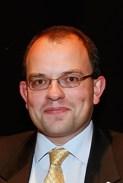
Fabrice Labeau, McGill University, Montreal, Canada.
Fabrice Labeau is an Associate Professor in the department of Electrical and Computer Engineering, at McGill University, where he also holds the NSERC/Hydro-Quebec Industrial Research Chair in Interactive Information Infrastructure for the power grid. From January to March 1999, he was a visiting scientist in the Department of Signal Processing and images (TSI), ENST Paris, France. He is executive vice president of the IEEE Vehicular Technology Society and a member of the Executive Committee of the IEEE Sensors Council. It is or was co-technical chair of the 2006 and 2012 Fall IEEE VTC conferences and of the 2015 IEEE International Conference on Image Processing. His research interests include signal processing and its applications in health, power grids, communications and compression. He has published over 90 papers in refereed journals and conferences in these areas.
Abstract
Information and Communications Technologies are poised to
play a major role in the transmission and distribution of
electrical power in the future. These new “smart grids” aim to
combine a powerful ICT architecture with the power gird to
cope with new challenges, including for example the
integration of renewable energy or electric vehicles. The best
known applications of ICTs for Smart Grids are in the area of
demand response management through the deployment of smart
meters for consumers.
In this presentation we will
summarize some development needs for new technologies in the
field of ICT, in a little explored area of Smart Grids, within
the power transmission system: electrical substations. The
need for remote monitoring and remote management that
naturally arises in the context of intelligent power grid
creates special challenges in this hostile environment in
terms of electromagnetic noise. Deploying wired or wireless
communication systems or instrumentation for sensor networks
in this environment remains difficult, and in this
presentation we will discuss some of these problems, and
solutions being developed in university-industry collaboration
between Hydro-Quebec and McGill University.
The head in clouds but feet on the ground

Eric Lafrance, Développement et Service aux clients Grande Puissance - CII Hydro-Québec, Montréal, Canada
After a degree in international management, Eric Lafrance has followed the development of information technology since the mid-1980s when the science was entering the mass market and where the web was still science-fiction for most humans. For 12 years, Mr. Lafrance worked at Hydro-Quebec with the business clientele. As Senior Trade Commissioner, his role is to welcome new investors wishing to settle in Quebec and to accompany them in their efforts to connections with the state company until the final implementation of their business project. It is through this activity that Mr. Lafrance has developed its expertise in data centers, a very attractive economic activity with respect to the abundance of affordable electricity in Quebec. Mr. Lafrance worked closely with government economic development entities and collaborating in the development of a national economic policy aimed at specific market data centers.
Abstract
The phenomenal growth of ICT jostle our everyday lives beyond our expectations. But all this universe of information circulating around us is so intangible as a real and tangible side. The cloud is not in the clouds but four walls on earth, well protected and often highly secretive. Data centers are the famous cloud and depending on their location, they present real challenges for electricity distributors. These challenges vary from company to company, for Hydro-Quebec it is a challenge of economic development. In this presentation, we will see what will happen in the coming years in terms of data generation, what is a data center and why these huge electron consumers represent a challenge other than the supply of electricity to Hydro-Quebec.
Energy monitoring in virtualized environments
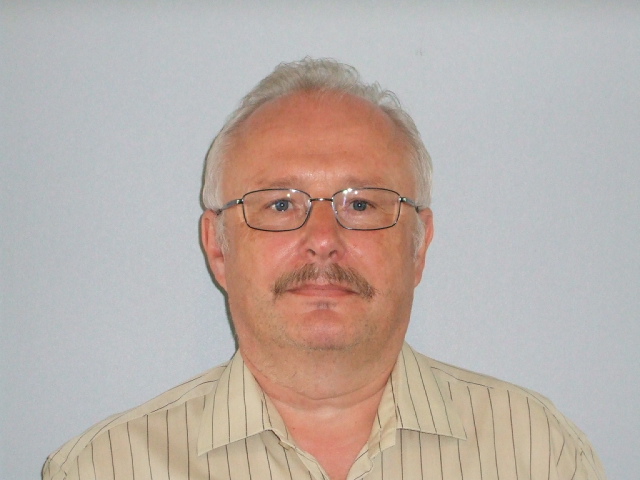
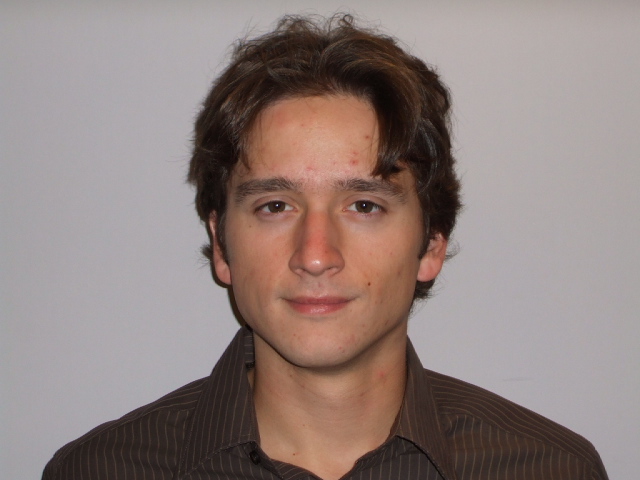
Dominique Lallement & Aurélien Bégou, EATON, Grenoble
After some electronics studies, Aurélien Bégou learned about network and telecommunications (DUT in 2007 then professional licence as internship by Winoa in 2008). After a first position as network administrator with Total (as subcontractor with Osiatis), Aurélien went back to school. He worked 2 years with Eaton Industries France as internship during enterprise network studies (2009/2011). During this position, he worked mainly on management and protection of virtualized servers. Since 2011 in this same company, he is now in charge of the software development for power management for virtualized servers.
Abstract
The Power Quality of Eaton is developing power backup solutions and power distribution solutions for Data Center. In addition of such equipment, Eaton provides software product for configuration, control, and graceful shutdown of critical application. Such monitoring (IPP) and protection (IPP) software products are compatible with many operating systems and with virtualization hypervisors like ESX/ESXi, HyperV, XenServer, KVM. They protect hypervisors and associated virtual machines. They are integrated with management software products like vCenter, SCVMM, XenCenter. In order to increase continuity of service they are able to trig automatically the transfer of virtual machines from a server to another server. IPM provides also site recovery feature for more complex user configurations like configurations composed of multiple parts of a data center and managed by VMware SRM (Site Recovery Management).
Daniel Leprince, EDF R&D, Research Engineer on Scientific Computing Technologies, Clamart, France
Daniel Leprince Daniel Leprince was
graduated from University Paris-Sud (Polytech Paris-Sud)in
2000 as Engineer in Computer Science. Working since 1984 at
EDF, he first worked in the domain of telecommunication and
data for electricity transmission networks for over ten years.
Since 2003, he is now research engineer at EDF R&D, working on
scientific computing. He works on energy efficiency issues
since 2009, as part of the EcoGrappe project.
Abstract
EDF is the industrial partner of the EcoGrappe project leaded by INRIA, which aims to reduce energy consumption in clusters. To reach that goal, INRIA designed a generic energy management framework based on a large number of virtual machines called SNOOZE. In this project, the role of EDF consist of providing the hardware infrastructure and proposing some realistic use cases based on EDF own applications. This talk presents some results and some possible future uses in High Performance Computing infrastructure.
Next challenges in dynamic consolidation
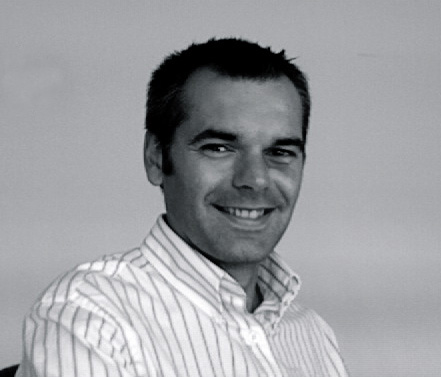
Jean-Marc Menaud, EMN/INRIA, LINA, Nantes, France
Jean-Marc Menaud is interesting in autonomic computing and to investigate the required components which would allow the implementation (language, runtime) of complex and large-scale autonomic system. My research encompasses any system that has a high software complexity (distributed, size of code etc.) and is large-scale in terms of size and heterogeneity of resources and software. In this context i proposelanguage support (with the DSL programming approach) for the implementation of self-optimization of autonomic system in a virtualized environment. From 2006, I'm working on Entropy then btrCloud, a software solution to manage virtual machine in cluster environnement. More precisly, i'm working on optimisation system to reduce energy consumption in large scale distributed system.
Abstract
Data centers hosting Cloud applications consume huge amounts of electrical energy, contributing to high operational costs and carbon footprints to the environment. The problem of power-aware dynamic placement of applications in virtualized heterogeneous systems have been widely studied, but interaction with placement rules not really. This talk presents a state of the art on dynamic consolidation and our ongoing work on the virtual machine placement under constraints.
Jean-Marc Pierson, University of Toulouse, France
Jean-Marc Pierson Since September 2006,
Jean-Marc Pierson serves as a Full Professor in Computer
Science at the University of Toulouse (France). Jean-Marc
Pierson received his PhD from the ENS-Lyon, France in1996. He
was an Associate Professor at the University Littoral
Cote-d'Opale (1997-2001) in Calais, then at INSA-Lyon
(2001-2006).
He is a member of the IRIT Laboratory and Chair
of the SEPIA Team on distributed systems. His main interests
are related to large-scale distributed systems. He serves on
several PCs and editorial boards in the Grid, Pervasive, and
Energy-aware computing area.
Since the last years, his
researches focus on energy aware distributed systems, in
particular monitoring, job placement and scheduling, green
networking, autonomic computing, mathematical modeling. He is
chairing the EU funded COST IC804 Action on "Energy Efficiency
in Large Scale Distributed Systems" and participates in
several national and european projects on energy efficiency.
For more information, please visit
http://www.irit.fr/~Jean-Marc.Pierson/
Abstract
In this presentation we will show the last advances on the
EU funded Strep project CoolEmAll. CoolEmAll gathers together
industry and academics and aims at providing advanced planning
and optimization tools for modular data center environments.
The talk will focus on the two main result expected for the
project: A Blueprint for <<>> and a Toolkit for Simulation,
Visualization and Decision (SVD Toolkit). Providing an
holistic view on the data center arrangement and operation,
taking into account hardware, cooling and workload management
is the heart of the project. We will show in the talk the
advances of the project after one year of existence and the
main scientific outcomes compared to state of the art, and
expectations of the project for the coming months.
Power Dissipation Challenges in
Optical Transport Systems and Proposed Solutions

Hugues Tournier, Ciena Corp, Ottawa, Canada
Hugues Tournier, as Manager of Power and Signal Integrity, supervises the projects related to high speed transmission for transport at Ciena. Mr. Tournier joined Ciena in 2010. In the past, he has worked with JDSU as a reflectometer designer. He also worked at Bell Northern Research (BNR) as a firmware and hardware designer, and for Nortel as a technical supervisor for hardware PCB development. Mr. Tournier is involved in the Optical Internetworking Forum (OIF) and he contributes to the decision-making process, particularly on matters related to power and interconnections between cards and at shelf and bay levels. Mr. Tournier holds a patent entitled Method and Apparatus for In-Service Optimization of the Performance of an Optical Transmission System. This method, which is currently largely used in the industry, allows to monitor the optical system performance without disruptions.
Abstract
Recently, power dissipation on transport optical systems has been a growing problem. This presentation will suggest a method for improving technology selection and overall power distribution in order to increase the efficiency of the system power delivery. A procedure will be suggested for proper IP selection required for specific integrated circuit, where most of the power dissipation occurs in a system. This procedure will also explain the potential optimization of power sources for an optical system applications. This suggested procedure will alleviate the effects of power dissipation while taking the environment into consideration.
Energy issues of computing on GPU clusters

Stephane Vialle, SUPELEC - UMI GeorgiaTech-CNRS & AlGorille INRIA Project Team, Metz, France
Stephane Vialle obtained his engineering Master degree from SUPELEC in 1990, his PhD in computer science from Paris-XI - Orsay University in 1996, and his French habilitation to supervise research (HDR) from Nancy-1 University in 2002. Stephane Vialle is member of SUPELEC staff since 1990, Professor at SUPELEC since 2005. He is currently member of the international research unit of CNRS and Georgia Tech University (UMI 2958 GT-CNRS), and is also associated member of the AlGorille INRIA Project Team. His research area is parallel and distributed computing, and includes GP-GPU and energy aware in parallel and intensive computing. Stephane Vialle is leader of the RGE action of French ASR research group (consortium of research teams), and is member of the European COST action IC0804 about Energy efficiency in large scale distributed systems.
Abstract
Adding and using a GPU in a computing node increases its
electrical power dissipation (in Watt). Then, function of the
speedup achieved compared to a classic multicore CPU, the
total energy consumption (in Watt x hours) can decrease or
increase.
On a GPU cluster the computing times become
smaller (compared to a CPU cluster), but the communication
times remain unchanged and become a greater fraction of the
total execution time. So, a parallel application can quickly
reach its scalability limit when processing a constant amount
of data (excepted for embarrassingly parallel
computations). Then, using more nodes to run a same job can
continue to decrease the execution time, but can also decrease
the energy efficiency of the computation (the flop/watt
ratio).
Moreover, considering a " saturated production
datacenter " with long queues of jobs to run, the massive
usage of GPUs will lead to speedup the numerous runs and to
increase their flops/watt ratio. But more jobs will be
processed and the total energy consumption of the datacenter
will increase. At the opposite, using GPUs to process jobs of
an " unsaturated experimental datacenter " (with limited
number of jobs to run) should lead to decrease the energy
consummed.
Finally, GPU usage can lead both to speedup
and to decrease the energy consumption, but it requires to
take care of multiple parameters. This talk will introduce our
experiments on GPU clusters, and our attempt to point out some
generic rules about efficient GPU usage.
Eco Impact of the HPC. Where to invest ?

Xavier Vigouroux, Bull SAS, Echirolles, France
Xavier Vigouroux , after a PhD in Distributed computing, worked for several major companies with different positions : From Investigator at sun labs to Support Engineer for HP. He is now enjoying working for bull for 6 years. He was leading the benchmarking team for HPC BU for the first five years and is now in charge of the " Education and Research " market for the HPC in BULL
Abstract
The goal of this presentation is to enumerate where to
invest to really reduce the impact of the HPC for the coming
years.
the presentation will try to embrace the whole,
from the Hardware and energy feeding to the code iteself.








